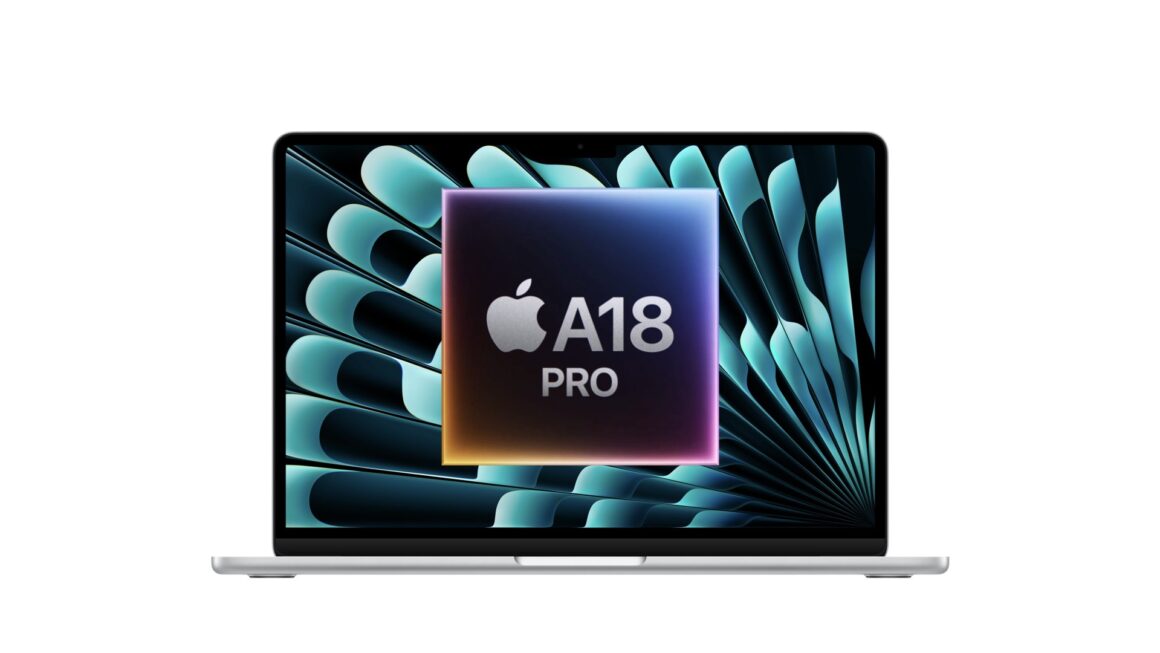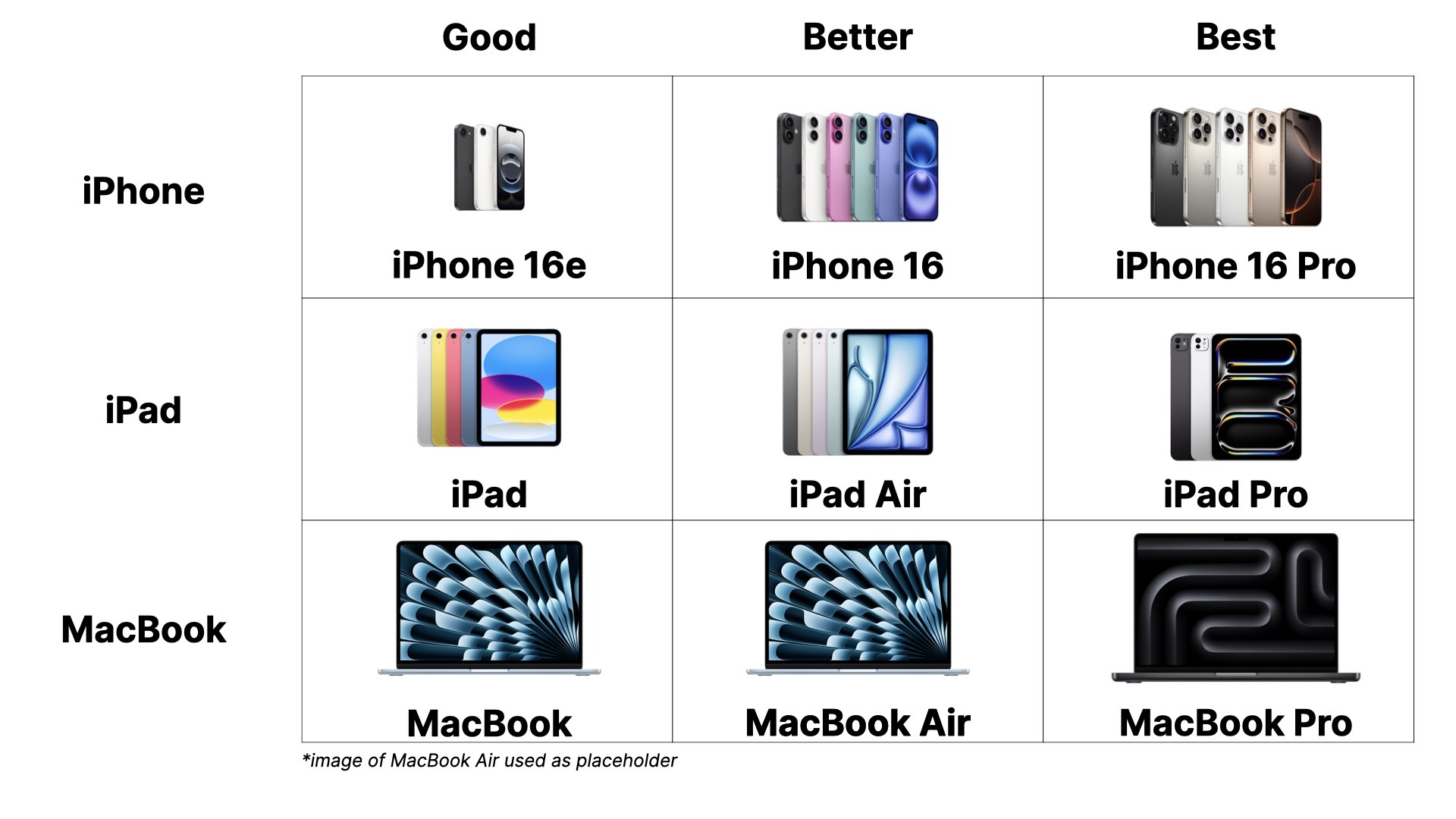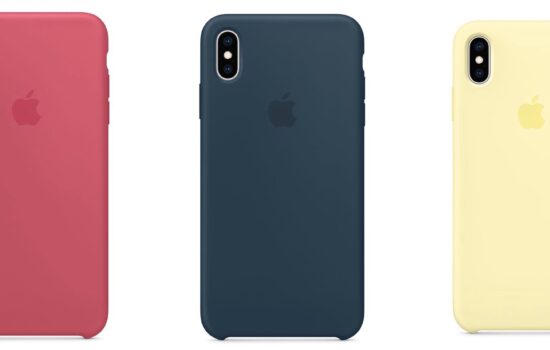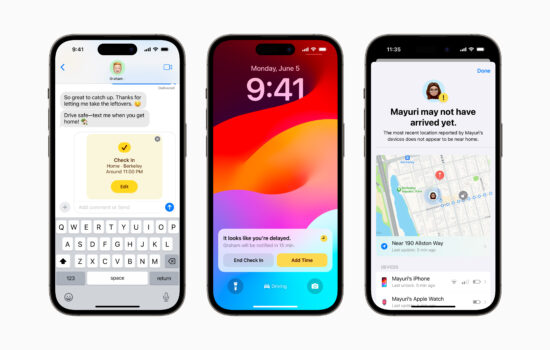A few weeks ago, we reported that Apple has been developing an upcoming MacBook model that will be even more affordable than the 13-inch MacBook Air, starting at $999, as Apple analyst Ming-Chi Kuo suggested, and Apple plans to launch the computer as early as next spring. Get this: this upcoming laptop will feature an iPhone-class A-series chip as opposed to the full-fledged M-series chips that have been used on every Mac with Apple Silicon. As discovered in the backend code by MacRumors, this machine has the identifier “Mac17,1”, and it will use the A18 Pro chip. This is consistent with the iPhone 16 Pro models that have the identifiers “iPhone17,x,” and they both feature the same chip. Now you may be asking: why would Apple add another model to the MacBook and the entire Mac lineup overall? I believe it’s for two reasons, but first, let’s take a look at the MacBook’s history.
The origins of the “MacBook”
Back in 2006, Apple transitioned its entire Mac line to Intel processors, and Apple’s laptop line back then consisted of the MacBook and the MacBook Pro, which replaced the PowerPC-based iBook and PowerBook series. Let’s focus on the non-Pro MacBook. That machine became the entry-level/consumer Apple laptop for the mainstream audience as it started at $1,099. That laptop came in two colors in a polycarbonate case: white or black. With its fun design and affordable price, it became a huge success in the education market. In 2008, things started to change as Apple added another model to the MacBook line dubbed the “MacBook Air”, which served as a premium thin-and-light machine that started at $1,799 and sat between the MacBook and MacBook Pro. That same year, Apple would introduce the aluminum MacBook with the precision unibody enclosure we all came to know and love. The following year, it would eventually evolve into the MacBook Pro line, and Apple would later redesign the white MacBook with a unibody polycarbonate design.
But ever since Apple redesigned the MacBook Air in October 2010 and dropped the starting price significantly to $999 with the 11” model. The MacBook Air, with its thin-and-light design, became quite a compelling option for customers and even students who take their work on the go. The lineup also got more confusing than it needed to be since three MacBooks with the same screen size started within $100-$200 of each other:
- 13-inch MacBook Air: $1,299
- 13-inch MacBook: $999
- 13-inch MacBook Pro: $1,199
So in July 2011, Apple quietly discontinued the white plastic MacBook for the consumer market, but the company continued to distribute the machine to educational institutions until February 2012. This simplified the lineup to just the MacBook Air and MacBook Pro.
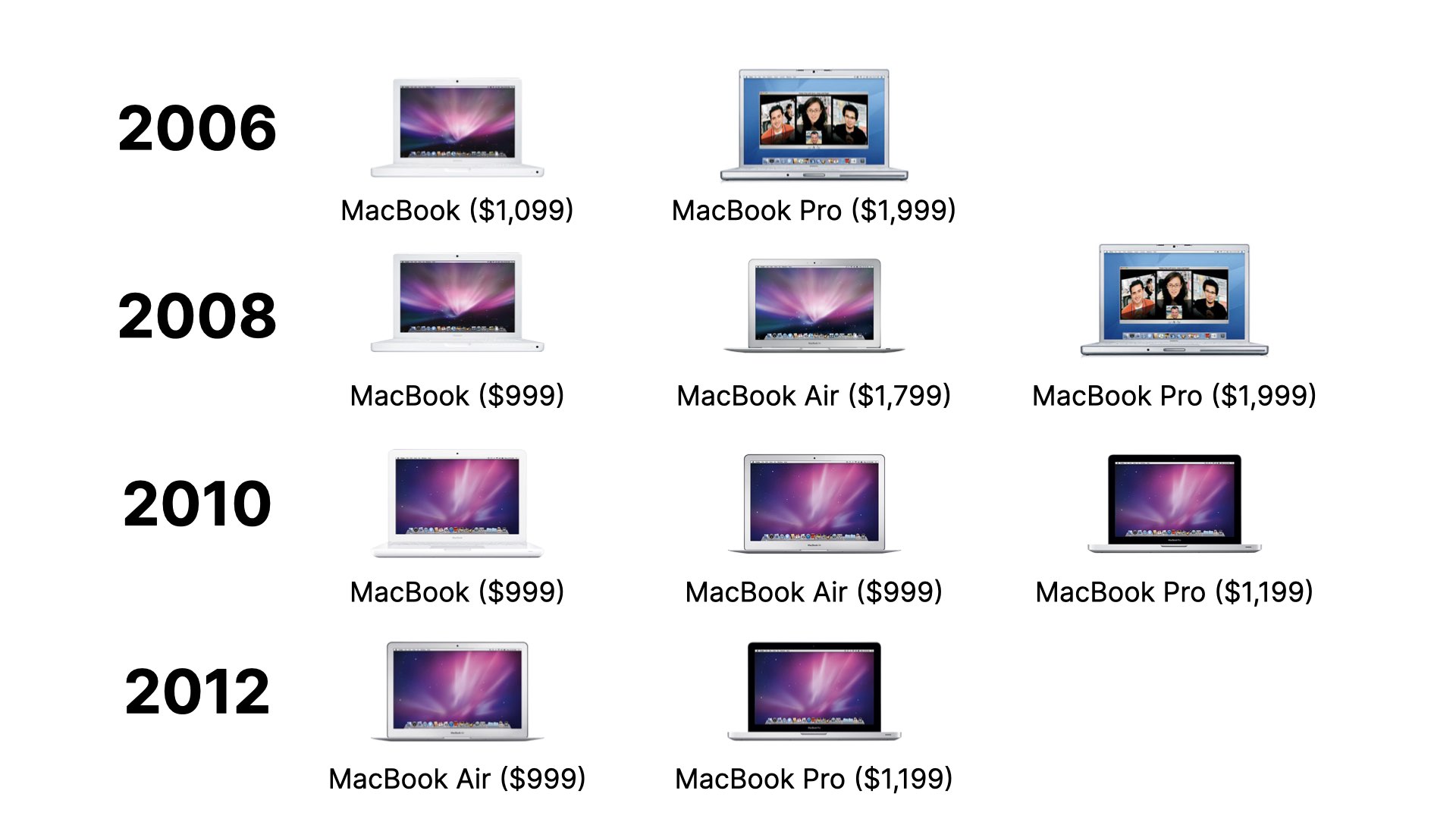
It wasn’t until March 2015 that Apple would bring back the moniker-less “MacBook” brand, but this time, in a drastically different form. That MacBook featured a smaller 12-inch Retina display and an even thinner, smaller, and lighter design that bested the MacBook Air in display quality and thinness. However, it apparently became a more expensive, premium option that sat above the MacBook Air and below the MacBook Pro line as it started at $1,299 – the same starting price as the 13-inch MacBook Pro back then. Worse enough, despite being ahead of its time with pioneering USB-C and Force Touch trackpad, it faced several shortcomings similar to the original MacBook Air, particularly the very inefficient Intel processors that those machines ran and the butterfly keyboard that plagued later MacBook Air/Pro models since. Apple would later redesign the MacBook Air with a Retina display and Thunderbolt/USB-C ports in October 2018, but that came at a higher starting price of $1,199. Several months later, Apple would quietly discontinue the 12-inch MacBook as Apple brought down the starting price for the more capable MacBook Air.

(1) the classic polycarbonate design in white and black
(2) the aluminum unibody that evolved into the 13-inch MacBook Pro
(3) white polycarbonate unibody design
(4) the super-thin and smaller 12-inch design
New, affordable model means more options for customers
So that brings us to today. Currently, Apple’s Mac lineup consists of the following:
- MacBook Air
- MacBook Pro
- iMac
- Mac mini
- Mac Studio
- Mac Pro
As you can see, a majority of the Mac lineup consists of desktop offerings, so there are just two laptop models that Apple currently sells. However, desktops have become more niche as more people prefer laptops over desktops for their portability. Some may argue that fewer choices make for a simpler lineup that customers can easily choose from. But if we take a look at the iPad lineup, there are four offerings to choose from: iPad mini, iPad, iPad Air, and iPad Pro. The benefits of having even more options are that the lineup can cover an even wider price range, and thus have models at every price point, especially to cater to those on specific budgets.
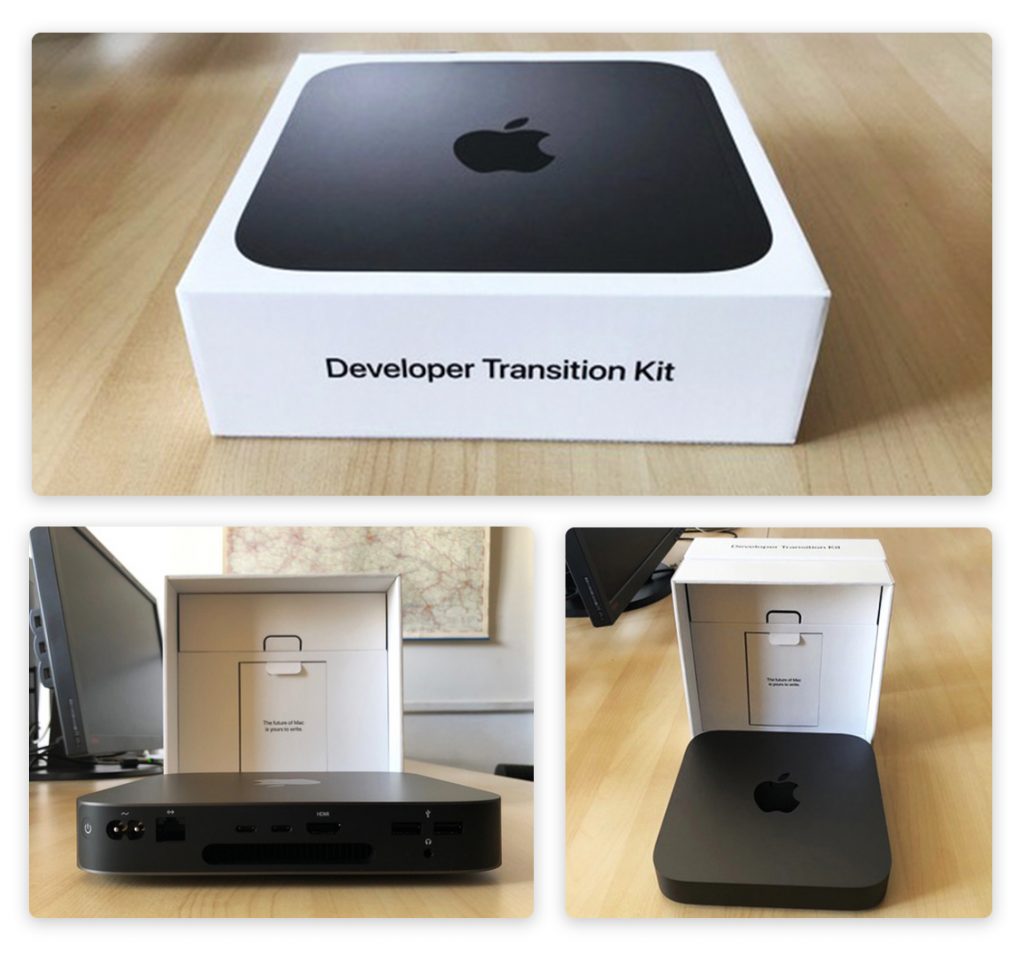
The Developer Transition Kit from 2020 features the A12Z chip from the 2020 iPad Pro, and that machine is offered exclusively to developers who are developing and optimizing Mac apps to run on Apple Silicon.
With that said, Apple may be taking the iPad approach with the MacBook lineup, and a MacBook featuring an A18 Pro chip shouldn’t come as a surprise, as both the iPhone and Mac have used Apple Silicon for years, and M-series chips are just beefier versions of A-series chips with more CPU/GPU cores. Fun fact: the Developer Transition Kit for Apple Silicon was a Mac mini form factor with the A12Z chip. If we take a look at the full-size iPad models (excluding the iPad mini), both the iPad Air/Pro feature M-series chips, and the base iPad features an A-series chip. So by introducing a newer, more affordable model, this would give Apple the opportunity to revive the suffix-less “MacBook” brand once again. Thus, we can have a better picture of what the upcoming MacBook lineup could look like next year if Apple were to debut that laptop in spring 2026:
- MacBook: A18 Pro
- MacBook Air: M5
- MacBook Pro: M5/M5 Pro/M5 Max
So this would be a lot similar to the iPad lineup in that regard. Apple has taken a similar approach with the iPhone 16 lineup; we have the 16e, the standard 16, and the 16 Pro. So by taking inspiration from both the iPad and iPhone, Apple can surely make it work with the MacBook lineup, as MacBook models have been widely preferred over Mac desktops.
Apple wants to compete in the education market even further
Apple aims to offer this upcoming MacBook at an even lower starting price, so this will not only reach more customers, but more importantly, it will help Apple compete in the education market further. Here’s why.
Apple has always been devoted to the education market since 1977, starting with the Apple II series, and it launched several education-focused Mac models throughout the decades. One notable example was the eMac from 2002 to 2006, which was a more affordable computer with a G4 processor that featured a CRT display rather than the LCD display on the more expensive iMac G4, since LCD displays were a bit expensive to produce back then. Apple used to make and distribute cheaper versions of the iMac exclusively for educational institutions, and even the white plastic MacBook, as mentioned before.
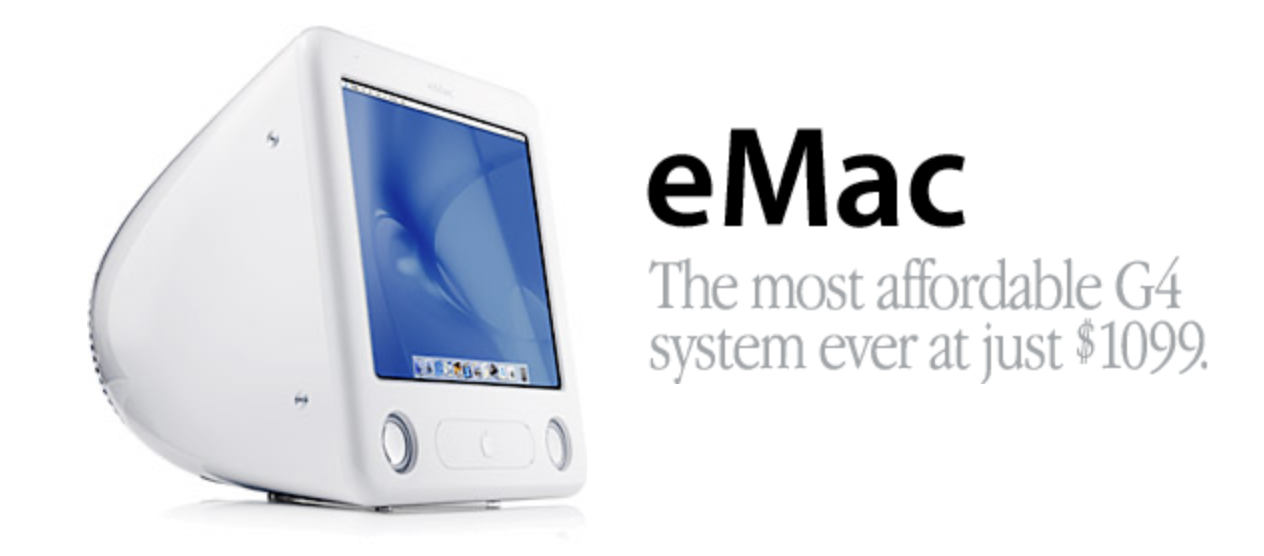
The eMac was introduced in 2002, and it was initially offered exclusively to education customers before Apple expanded sales to consumers, making the eMac the most affordable system with a G4 processor and an alternative to the higher-end iMac G4.
But in this Post-PC era with the rise of both smartphones and tablets (thanks to the birth of the iPhone and iPad), netbooks would eventually face their demise, but Chromebooks started to dominate both the low-end PC market and the education market, beating out Windows and Mac. This worried Apple. Apple couldn’t make a sub-$500 MacBook since Steve Jobs believed the company would never ship junk or offer simply “lousy products.” So instead, Apple started to offer the base iPad at around $300, and that iPad features a large, full-size display and better performance/specs than most Chromebooks. And the iPad will be even more capable since iPadOS 26 will bring many software improvements, especially the new window multitasking system, to all supported iPad models.
However, for specific use cases like coding assignments and 3D modeling, an iPad can’t run certain applications that students and administrators would need to install. That’s coming from a computer science alumnus myself. So a better solution for Apple would be to offer a budget-oriented MacBook starting below $900. Furthermore, this could give Apple an opportunity to pay homage to the original clamshell iBook introduced in 1999 by offering several different color options, similar to how today’s 24-inch iMac pays homage to the original iMac design from 1998, as both computers come in several fun colors. The color choices that Kuo expects MacBook to offer are: silver, blue, yellow, and pink. This would also be similar to the base iPad, since those are the color options that the iPad 10 and iPad 11 offer. So, having a more budget-focused MacBook will certainly boost MacBook shipments and sales in the education market even further.
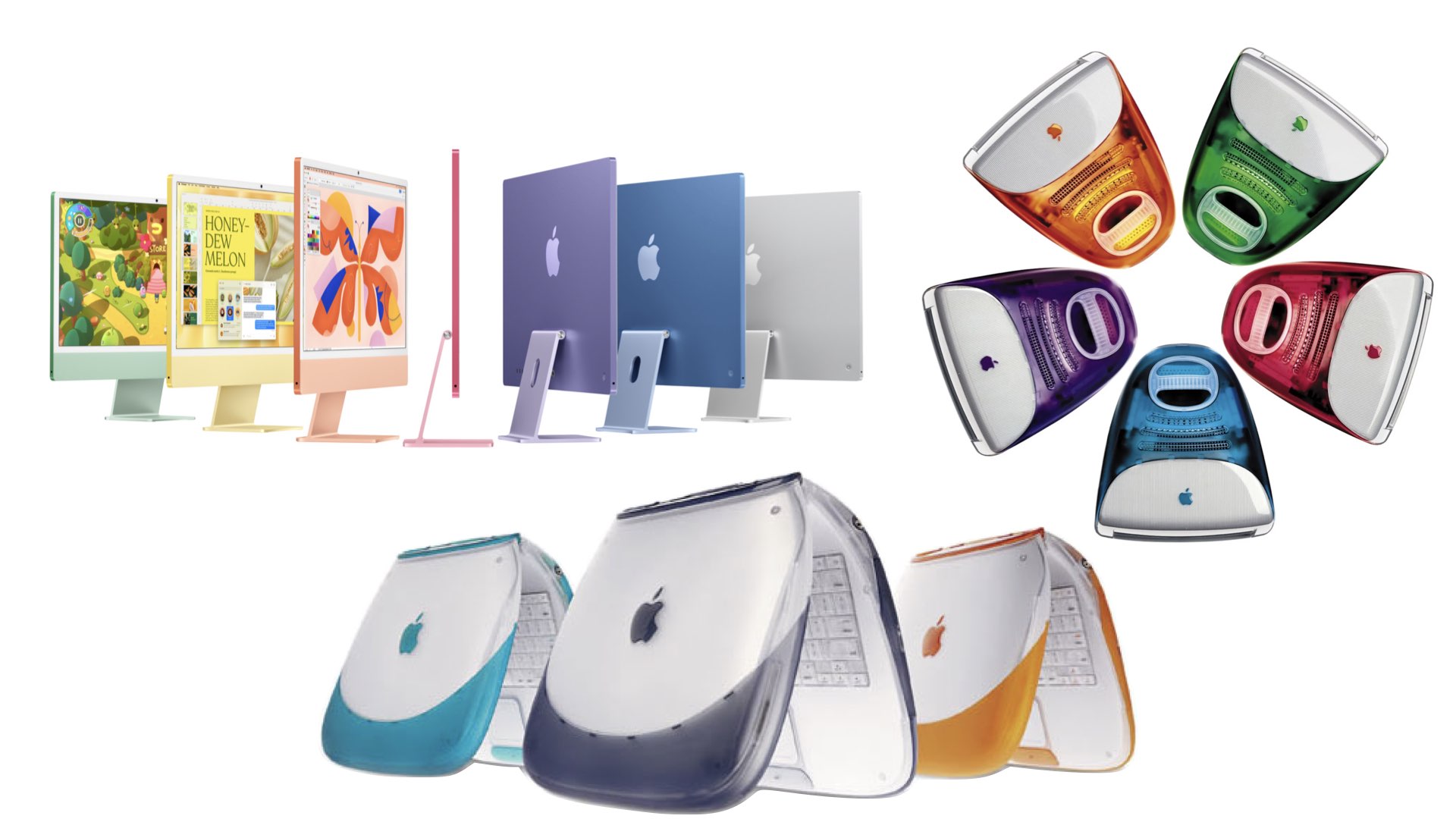
Specs we should expect for this “budget” MacBook
Now that we understand Apple’s marketing strategy for this MacBook, what specs should we expect for the laptop? As previously mentioned, it’s expected to feature the A18 Pro chip. But why the A18 Pro chip? Apple started to have both non-Pro and Pro variants of its A-series chips since the A17 Pro, and both the A17 Pro and A18 Pro feature 8GB of memory, which is the minimum requirement to support Apple Intelligence. Performance-wise, it wouldn’t be as powerful as the M4 chip, but the A18 Pro’s multi-core performance is very comparable to that of the M1 chip. Two aspects that the A18 Pro shines over the M1 are improved graphics and better energy efficiency since it’s based on more modern architecture (2nd-generation 3nm process for A18 Pro vs. 1st-generation 5nm process for M1), which potentially mean even longer battery life. I wouldn’t be surprised if the A18 Pro is going to be a binned variant for this MacBook, but if you think about it, it would make sense. The A16 was introduced on the iPhone 14 Pro and the standard iPhone 15 a year later, but when Apple updated the base iPad this year to the A16, that chip has fewer CPU/GPU cores. Similar to the A17 Pro, that chip debuted on the iPhone 15 Pro, but a year later, Apple would use binned variants of that chip for the iPad mini 7. So, by repurposing binned chips, this would help Apple save production costs for this MacBook.
In terms of I/O, unlike the M-series chips found in other Macs with Apple Silicon, the A18 Pro has a USB 3 controller, so it will be limited to USB 3 speeds of up to 10 Gb/s. Believe it or not, all the moniker-less MacBook models never had FireWire or Thunderbolt support, even the USB-C port on the 12-inch MacBook was limited to USB 3 speeds up to 5 Gb/s. What remains unclear is support for display output. Currently, unlike the M-series iPads and Macs, iPhones and iPads with A-series chips are limited to only screen mirroring for display output. If Apple were to bring the A18 Pro to this MacBook, then that could be the biggest drawback, as Macs have had support for extended display support for years. But given that Apple has been improving the display controllers for its A-series chips, I sure hope Apple could still make extended display support work, albeit with some limitations on resolution or refresh rate. Another thing to note is that according to the footnote for the Studio Display on the product’s specs page, it states that the USB-C ports on the Studio Display deliver USB 2 data transfer speeds when connected to these models:
- iPad Pro 12.9-inch (3rd and 4th generation)
- iPad Pro 11-inch (1st and 2nd generation)
- iPad Air (5th generation)
What those models have in common is that their built-in USB-C port delivers USB 3 (10Gbps) data transfer speeds. Now, keep in mind that the footnote does not mention either the more recent M2 or M3 iPad Air, as both models deliver the same data transfer speeds through that port. It could be that the footnote needs to be updated, too, but either way, that may be another limitation that this upcoming MacBook may have.
Speaking of displays, some people were fans of the previous 12-inch MacBook for its super-compact thin-and-light form factor, and with the improvements in efficiency that Apple Silicon brings, some have been wanting Apple to bring back the form factor. However, that may not be the case as Kuo expects this MacBook to feature a 13-inch display, which I think is the goldilocks screen size for a compact laptop – not too small that it’d feel cramped and not too big to take up more of your desk space. I own a 15” MacBook Air, but once I tried out someone’s 13” Air for a bit, I just loved how compact that laptop felt. The display specs remain to be seen, but I wouldn’t be surprised if Apple downgraded the display in some way, perhaps removing features like the P3 Wide Color found in other MacBooks. If Apple were to price this laptop around $649, I hope Apple could keep the display laminated for what you’d be paying for, especially within that price range. We expect this MacBook to come in only the 13-inch size, so all that said, this MacBook would essentially be a skimped-down version of the MacBook Air, similar to how the base iPad is to the iPad Air.
As previously mentioned, Kuo expects this MacBook to come in silver, blue, yellow, and pink, much like the base iPad. So offering more vibrant colors on this MacBook could differentiate it from the MacBook Air, with its more muted color offerings similar to the iPad/iPad Air, respectively.
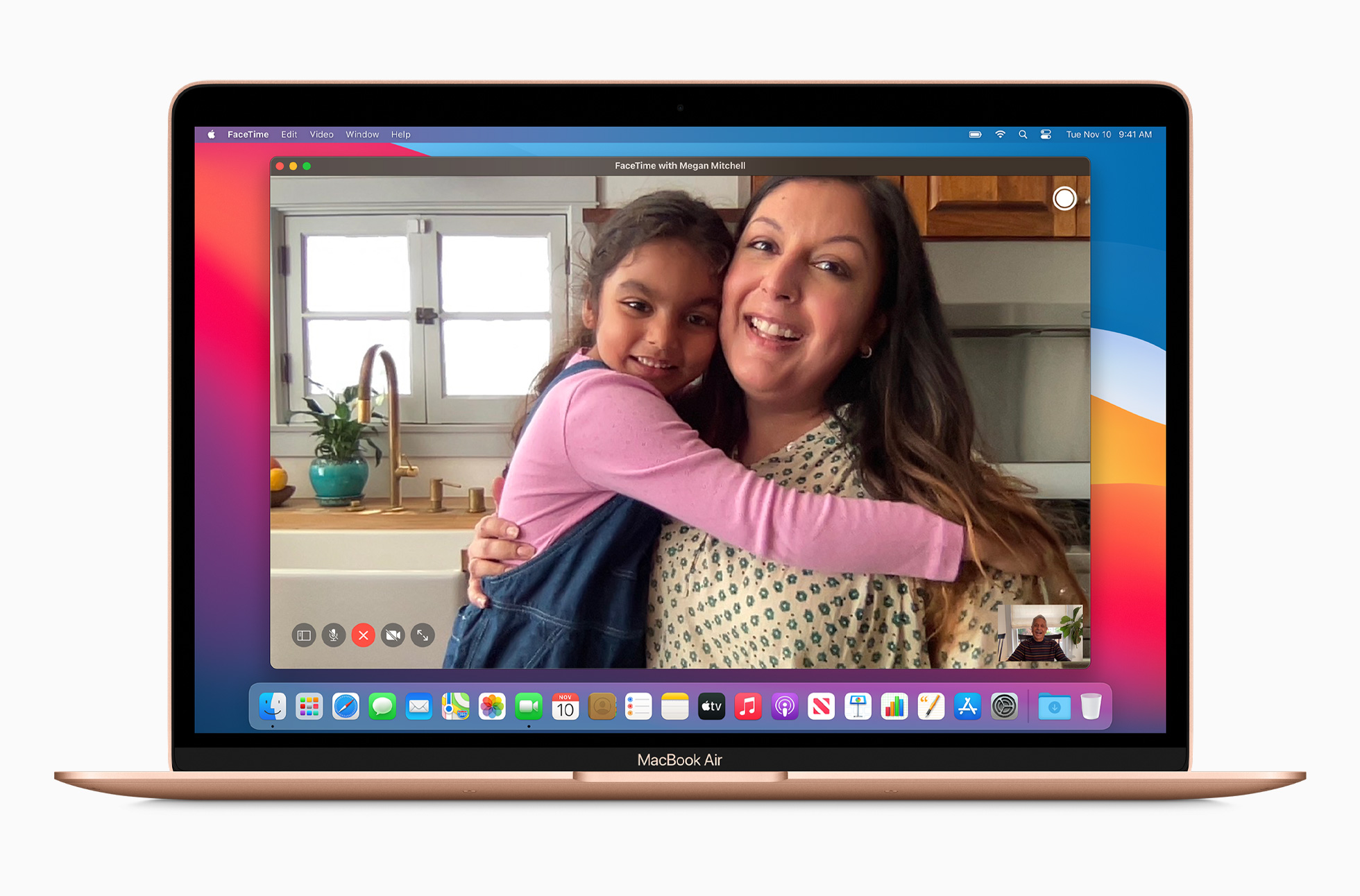
You may not know this, but Apple quietly continues to distribute sales for the M1 MacBook Air to Walmart exclusively for $649, making it a great value for budget-conscious consumers. It’s been three years since the current design of the MacBook Air debuted, so it’s likely we’ll see a similar, modern (uniformed) design for this MacBook as Apple tends to trickle down its modern designs to its lower-end products like the base iPad. The base iPad starts at $349, and the iPad Air starts at $599, so for the same storage/configuration, it’s a $250 price gap between the two models. So this MacBook could start around $649-$749, but it would still be a killer value for what you’d be paying for: a full-fledged Mac experience in a portable form factor with all the essentials, and Apple could definitely replace the aging M1 MacBook Air with this MacBook that has more modern hardware/features.
So even though this list of features won’t be final, we should get an idea of what this MacBook may offer:
- A18 Pro chip
- 8GB of memory
- 256GB starting storage
- USB-C data transfer speeds up to 10Gb/s
- 13-inch Liquid Retina display
- Colors: silver, blue, yellow, and pink
- Starting price: $649-$749
Microsoft has been offering a cheaper version of its Surface Laptop for years, especially with the recently announced Surface Laptop 13”, which is smaller than the 13.8” model. So Apple will surely attract even more people from a Chromebook or PC to a Mac with this MacBook.

The recent addition of the 13-inch Surface Laptop allows the Surface Laptop to reach even more customers with a lower price-point entry.
Kuo expects this MacBook to make its debut next spring, which would be logical as Apple likes to introduce its budget-oriented products in that timeframe. We’ve seen that with the iPhone 16e, the iPad with A16, and the MacBook Air with M4. It’s also rumored that Apple may stagnate its releases for its iPhone “e” and standard models starting with the iPhone 18/18e in spring 2027.
Conclusion
With such great marketing potential, Apple will be able to saturate the market even further, and it will continue to build upon one of Steve Jobs’ philosophies. Back in 1999, Jobs’ product strategy was a simple 2×2 matrix that offered both desktop/laptop for both consumer/professional. It was a strategy that saved Apple from bankruptcy.
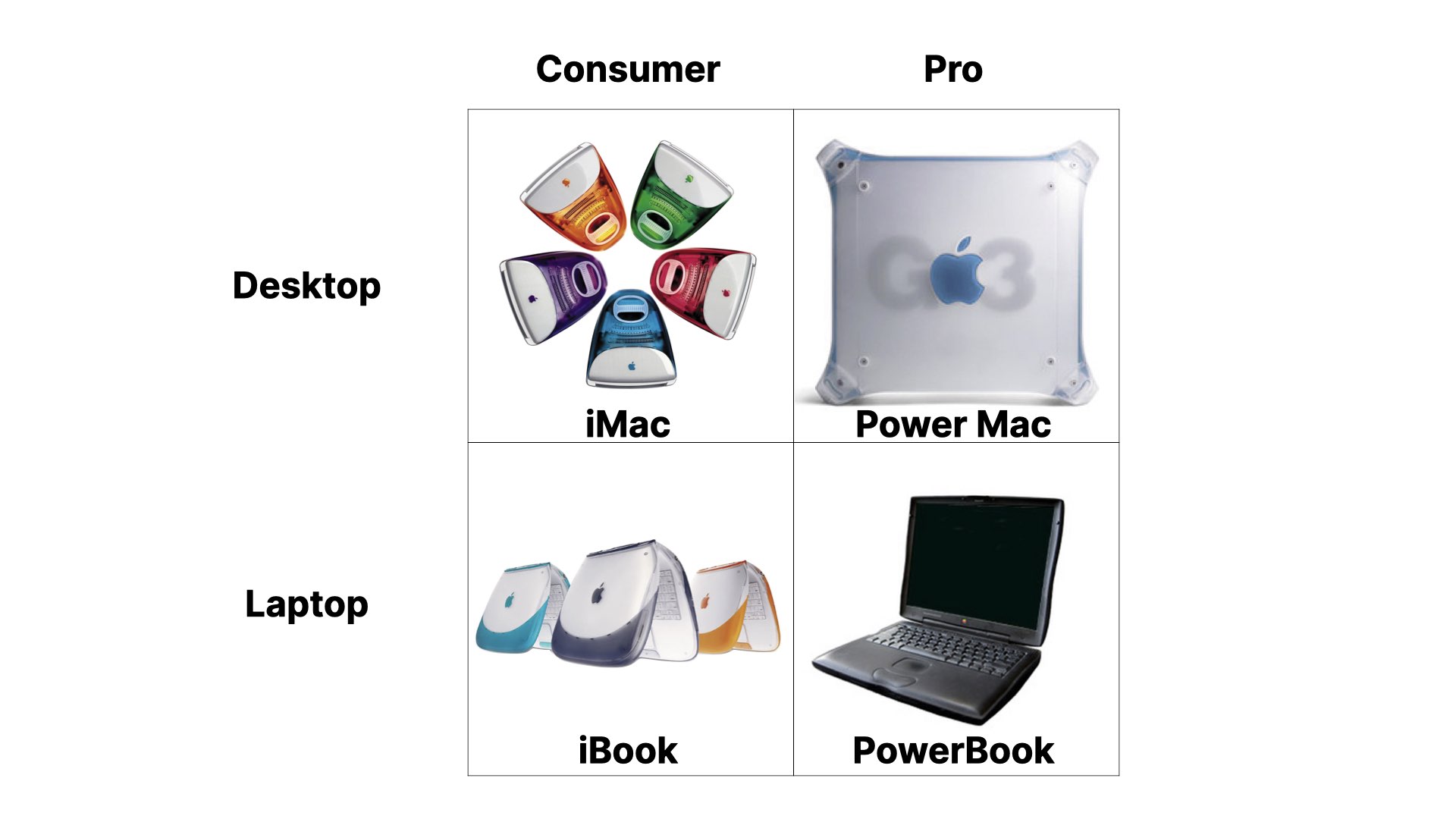
The matrix was straightforward:
*Desktops would have “Mac” in the end of the product name
*Laptops would have “Book” in the end of the product name
*Consumer products would have “i” in the end of the product name
*Pro products would have “Power” in the end of the product name
But since then, the market has evolved significantly as Apple has evolved from a computer company to a mobile device company with the popularity of both iPhone and iPad. As more people buy these devices, Apple has been able to saturate the smartphone/tablet market by offering models at every price point by categorizing them into good/better/best.
- iPhone 16e (6.1”); iPhone 16/Plus (6.1”/6.7”); iPhone 16 Pro/Max (6.3”/6.9”)
- iPad (11”); iPad Air (11”/13”); iPad Pro (11”/13”)
- MacBook (13”); MacBook Air (13”/15”); MacBook Pro (14”/16”)
As you can see, Apple offers just one screen size for the base model and two screen sizes for each of the two higher-end models, covering every price point.
This upcoming MacBook will certainly not be the most innovative or groundbreaking product from Apple, but it will surely be a huge hit as it will attract so many customers, boost Mac shipments/sales, and even potentially cannibalize sales of budget PCs and Chromebooks in the education market.
What do you think about this economic MacBook? Do you think it will take off in both the consumer/education market? Sound off in the comments below, and make sure to follow us on X (@Appleosophy) for more Apple-related news!





